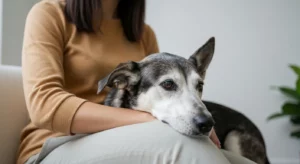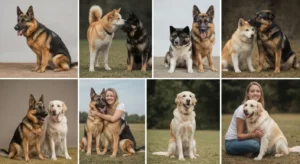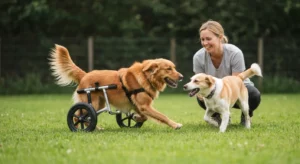Welcome to pet ownership! It’s one of the most rewarding journeys you can embark on. In my 15 years as a veterinarian, I’ve seen firsthand how a little preparation can make a world of difference in a pet’s health, happiness, and safety. Bringing a new animal into your home is about more than just love and cuddles; it’s about creating an environment where they can truly thrive.
Many new owners focus on the basics like food and a leash, but a truly well-equipped home addresses a pet’s needs from a holistic perspective—covering their physical health, mental stimulation, and emergency preparedness. This list goes beyond the obvious to give you an expert-backed checklist of the items that are genuinely essential. Think of this as your foundational toolkit for responsible and joyful pet ownership.
-
1. Proper Identification: A Microchip and a Physical Tag
The ‘Why’: This is, without a doubt, the most critical safety item on this list. A shocking number of pets go missing every year, and many never find their way home simply because they lack proper identification. A collar can fall off or be removed, and a microchip is useless if its registration information is outdated. Relying on just one method is a gamble; using both gives your pet the best possible chance of being returned to you.
The Actionable Advice:
Microchip: A microchip is a tiny transponder, about the size of a grain of rice, that is injected under your pet’s skin. It’s a permanent form of ID that can’t get lost.- Get it done: Have your pet microchipped at your veterinarian’s office or a local shelter. It’s a quick and safe procedure.
- Register immediately: A chip is useless until you register it with your contact information. Do this the same day it’s implanted.
- Keep it updated: Did you move or change your phone number? Updating your microchip registration should be as automatic as updating your driver’s license. Set an annual calendar reminder to check your contact details on the manufacturer’s website.
Physical ID Tag: This is your pet’s first line of defense. Anyone who finds your lost pet can immediately call you without needing a special scanner.
- What to include: The tag should have your pet’s name, your primary phone number, and a secondary number. You can also add crucial information like “Needs Daily Meds” or “I’m Microchipped.”
- Check for wear: Engraving on tags can fade over time. Check it every few months and replace it when it becomes difficult to read.
-
2. A Well-Fitted Harness and Sturdy Leash
The ‘Why’: While collars are essential for holding ID tags, they can be dangerous for walking, especially for dogs who pull or for brachycephalic (flat-faced) breeds like Pugs and French Bulldogs. Pulling on a collar puts immense pressure on the trachea (windpipe), which can lead to chronic coughing, pain, and even tracheal collapse. A good harness, on the other hand, distributes pressure safely across the chest and shoulders, giving you better control without risking injury.
The Actionable Advice:
Choosing a Harness:- Front-Clip (No-Pull) Harness: These are my top recommendation for training dogs not to pull. The leash attaches to a ring on the dog’s chest, which gently redirects them back toward you when they pull forward.
- Back-Clip Harness: These are comfortable for dogs who are already well-behaved on a leash. However, they can sometimes encourage pulling in untrained dogs, as it engages their natural “opposition reflex.”
- Get the right fit: A harness should be snug but not tight. You should be able to fit two fingers comfortably between the harness and your pet’s body. Measure your dog’s chest girth before buying.
Choosing a Leash:
- Avoid retractable leashes: I strongly advise against these. They teach dogs to pull, offer very little control in an emergency, and can cause serious injuries (rope burns, entanglements) to both pets and people.
- Opt for a standard leash: A 6-foot nylon or leather leash is the gold standard. It provides enough room for your dog to explore while keeping them safely close to you.
-
3. A High-Quality, Species-Appropriate Diet
The ‘Why’: Nutrition is the foundation of your pet’s health. What you put in their bowl every day has a direct impact on their energy levels, skin and coat health, immune system, and longevity. The pet food aisle can be incredibly confusing, filled with marketing gimmicks and conflicting information. Choosing the right food isn’t about the fanciest bag; it’s about understanding what your specific pet needs.
The Actionable Advice:
How to Read a Pet Food Label:- Check the first ingredient: For dogs and cats (who are obligate carnivores), the first ingredient should be a named meat source, like “deboned chicken” or “lamb meal,” not a generic “meat byproduct” or a grain like corn.
- Look for the AAFCO statement: On the back of the bag, look for the nutritional adequacy statement from the Association of American Feed Control Officials (AAFCO). It should state that the food is “complete and balanced” for your pet’s specific life stage (e.g., puppy/kitten, adult, senior).
- Be wary of trends: “Grain-free” diets became popular but have been linked by the FDA to a specific type of heart disease (dilated cardiomyopathy) in some dogs. Unless your veterinarian has diagnosed a specific grain allergy, a diet with healthy grains is generally safer and more beneficial.
Consult Your Vet: Your veterinarian is your best resource for nutritional advice. They can recommend specific brands or formulas based on your pet’s age, breed, activity level, and any underlying health conditions.
-
4. A Pet-Specific First-Aid Kit
The ‘Why’: Accidents and minor injuries happen, and they often happen outside of veterinary office hours. Having a well-stocked first-aid kit allows you to manage a minor situation at home or stabilize your pet before transporting them to an emergency clinic. You can’t just use a human first-aid kit, as some items (like certain pain relievers) are toxic to pets.
The Actionable Advice:
Assemble Your Kit: You can buy a pre-made kit or build your own. Keep it in a waterproof container and store it somewhere easily accessible.
Essential Components:- Emergency Contact Card: Your vet’s number, the nearest 24/7 emergency animal hospital, and the ASPCA Animal Poison Control Center number (888-426-4435).
- Wound Care: Antiseptic wipes (povidone-iodine or chlorhexidine-based), sterile saline solution for flushing wounds, and antibiotic ointment.
- Bandaging Materials: Gauze pads/rolls, non-stick pads, and self-adhering bandages (like Vetrap), which stick to themselves but not to fur. Never use human adhesive bandages.
- Tools: Blunt-tipped scissors, tweezers, and a digital rectal thermometer.
- Other Must-Haves: Styptic powder to stop bleeding from a clipped nail, a slip lead, and a towel or blanket to use as a stretcher or for restraint.
-
5. Durable, Safe, and Enriching Toys
The ‘Why’: Toys are not a luxury; they are a necessity for your pet’s mental health. A bored pet is often a destructive pet. Chewing, chasing, and problem-solving are natural behaviors that toys help channel appropriately. The wrong toys, however, can be incredibly dangerous, leading to choking, intestinal blockages, or broken teeth.
The Actionable Advice:
Provide a Variety:- Chew Toys: For dogs, durable rubber toys (like those from KONG) are excellent for satisfying the need to chew. They can also be stuffed with food to add an enrichment element.
- Puzzle Toys: These toys require your pet to think and problem-solve to get a food reward. They are fantastic for building confidence and preventing boredom, especially when you have to leave your pet alone.
- Interactive Toys: For cats, wand toys with feathers or mice are perfect for simulating hunting. For dogs, fetch toys or tug ropes (used gently) help you bond and burn off energy together.
Safety First:
- Supervise: Always supervise your pet with a new toy until you are confident they won’t destroy and ingest it.
- Avoid Hazards: Steer clear of cooked bones (they splinter), hard plastic toys that can break teeth, and toys with small, glued-on parts that can be easily swallowed. Regularly inspect toys and throw away any that are broken or falling apart.
-
6. A Secure Crate or Carrier
The ‘Why’: A crate or carrier is one of the most versatile and important management tools you can own. It is NOT a cage for punishment. When introduced properly, it becomes your pet’s personal den—a safe, secure space where they can retreat when they feel overwhelmed. It’s also essential for safe car travel, vet visits, and is invaluable for house-training a new puppy.
The Actionable Advice:
Make it a Happy Place (Positive Association):- Introduce it slowly: Leave the crate door open in your living area. Toss high-value treats inside for your pet to find on their own.
- Feed meals inside: Start feeding your pet their meals inside the crate with the door open, then eventually with the door closed for short periods.
- Never use it for punishment: Sending a pet to their crate after they’ve done something “wrong” will create a negative association and undermine its purpose as a safe space.
Choose the Right One:
- Size Matters: The crate should be large enough for your pet to stand up, turn around, and lie down comfortably, but not so large that they can use one end as a bathroom and the other as a bed.
- Travel Safety: For car travel, a crash-tested carrier or crate is the safest option to protect your pet in an accident.
-
7. The Right Grooming Tools for Your Pet’s Coat
The ‘Why’: Grooming is about health, not just appearance. Neglected grooming can lead to painful matting in long-haired pets, which pulls on the skin and can hide infections or parasites. Overgrown nails are painful to walk on and can cause joint problems. Regular grooming sessions are also a great opportunity to check your pet’s body for any new lumps, bumps, or skin issues.
The Actionable Advice:
The Basic Toolkit:- Brush/Comb: The type you need depends on your pet’s coat. A slicker brush works well for many coat types to remove loose fur and detangle. A grooming rake or de-shedding tool is essential for pets with thick undercoats. Long-haired pets will need a metal comb.
- Nail Clippers: Choose either the scissor-style or guillotine-style clippers. Have styptic powder on hand in case you accidentally clip the quick (the blood vessel in the nail). Start handling your pet’s paws and trimming nails early and often to make it a low-stress experience.
- Pet-Safe Shampoo: Never use human shampoo. A pet’s skin has a different pH balance, and human products can cause severe dryness, irritation, and skin infections. Look for a gentle, soap-free pet shampoo.
-
8. Pet-Safe Cleaning Supplies
The ‘Why’: Many common household cleaning products contain chemicals that are highly toxic to pets. Ingredients like ammonia, chlorine bleach, and phenols can cause respiratory irritation, chemical burns, and even organ failure if ingested or inhaled. Since pets spend most of their time on the floor and lick their paws, they are especially vulnerable to exposure.
The Actionable Advice:
For Accidents:- Use Enzymatic Cleaners: For urine, feces, or vomit, standard cleaners won’t cut it. You need an enzymatic cleaner. These products use enzymes to break down the specific organic proteins in pet waste, completely eliminating the stain and—most importantly—the odor. If you don’t remove the odor, your pet is very likely to re-soil the same spot.
For General Cleaning:
- Read Labels Carefully: Look for products labeled “pet-safe” or “non-toxic.” Avoid products containing phenols (common in some pine-scented cleaners), phthalates, and large amounts of bleach or ammonia.
- Simple is often better: A solution of white vinegar and water is a safe and effective cleaner for many surfaces.
-
9. An Emergency Fund or Pet Insurance
The ‘Why’: This is the essential item that I wish more pet owners had in place before a crisis. Veterinary medicine can work wonders, but advanced diagnostics and treatments can be expensive. An unexpected accident or illness can lead to bills totaling thousands of dollars. Having a financial plan allows you to make decisions based on your pet’s best interest, not your bank account, removing an immense amount of stress during an already difficult time.
The Actionable Advice:
Two Main Options:- Pet Insurance: You pay a monthly premium, and the insurance company reimburses you for a percentage of covered veterinary bills after you meet your deductible. The best time to get insurance is when your pet is young and healthy, before any pre-existing conditions develop. Research different plans carefully—look at coverage, deductibles, reimbursement percentages, and customer reviews.
- Dedicated Savings Account: If insurance isn’t for you, open a separate high-yield savings account specifically for vet emergencies. Commit to depositing a set amount each month (e.g., $50-$100) and do not touch it for anything else.
The Goal: Whether you choose insurance, savings, or both, the goal is to have a plan. Discussing options with your vet can also help you understand potential future costs for your specific breed.
-
10. A Relationship with a Trusted Veterinarian
The ‘Why’: A veterinarian isn’t just someone you call when your pet is sick. They are your partner in proactive, preventative healthcare. Establishing a relationship with a veterinary clinic before you have an emergency is crucial. It ensures your pet has a medical history on file and that you have a trusted professional to call for advice. Annual wellness exams are vital for catching problems early, when they are most treatable.
The Actionable Advice:
How to Find a Good Vet:- Ask for recommendations: Talk to friends, neighbors, or breeders in your area.
- Check for certifications: Look for clinics that are AAHA (American Animal Hospital Association) accredited, as this indicates they meet very high standards of care.
- Schedule a “meet and greet”: Many clinics will allow you to tour the facility and meet the staff before becoming a client. This lets you get a feel for the clinic’s culture and communication style.
Be Proactive: Don’t wait for a problem. Schedule a wellness exam within the first week or two of bringing a new pet home. This establishes a baseline of health and gets your pet started on a proper vaccination and parasite prevention schedule.
-
11. Enrichment Feeders and Puzzle Bowls
The ‘Why’: In the wild, animals spend a significant portion of their day foraging and hunting for food. We take that job away when we put their meal in a bowl, which they often finish in 30 seconds. This can lead to boredom and unhealthy eating habits like speed-eating, which increases the risk of vomiting and life-threatening bloat in dogs. Enrichment feeders turn mealtime into a stimulating mental exercise.
The Actionable Advice:
Ditch the Standard Bowl:- Slow-Feeder Bowls: These bowls have built-in mazes and obstacles that force your pet to eat more slowly, improving digestion and providing a fun challenge.
- Snuffle Mats: These are mats made of fleece strips where you can hide dry kibble. Your pet has to use their powerful sense of smell to find their food, which is a highly satisfying and calming activity.
- Food-Dispensing Toys: Toys like the KONG Wobbler or other puzzle balls can be filled with your pet’s meal. They have to roll and nudge the toy around to get the kibble to fall out.
Start Easy: When introducing a new puzzle toy, make it very easy for your pet to succeed at first so they don’t get frustrated. Gradually increase the difficulty as they get the hang of it.
-
12. A Comfortable and Designated Bed
The ‘Why’: Just like you need your own space to unwind, so does your pet. A designated bed provides a sense of security and ownership. It gives them a comfortable place to rest that is entirely theirs, which can help with boundary training (e.g., teaching them to stay off the human furniture). For older or large-breed pets, a supportive bed is not a luxury—it’s essential for joint health.
The Actionable Advice:
Choose the Right Bed:- Orthopedic Beds: For senior pets, large breeds, or animals with arthritis, an orthopedic bed made of memory foam is a must. It cushions joints, relieves pressure points, and improves sleep quality.
- Consider their habits: Does your dog like to curl up in a ball? A round bed with raised sides (a “bolster bed”) might be perfect. Does your cat love to hide? A covered or “cave” bed could be their favorite spot.
- Easy to Clean: Look for a bed with a removable, machine-washable cover. This is non-negotiable for hygiene.
Location, Location, Location: Place the bed in a part of the house where the family spends time, but out of the main foot-traffic path. This allows your pet to be near you while still being able to rest undisturbed.
By investing in these 12 essential items, you are setting you and your pet up for a long, healthy, and happy life together. This preparation shows a commitment to their well-being that goes far beyond basic needs and lays the groundwork for a truly incredible bond.












